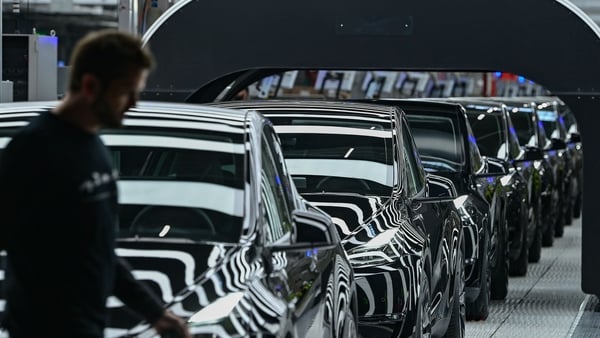The third race of the 2024 F1 Championship takes place this weekend – with 20 drivers, across 10 teams, competing for Australia’s Sir Jack Brabham Trophy.
But it’s not just silverware they’re after. F1 drivers get bonuses for a podium finish, while a team’s tournament placement translates to millions of dollars in extra prize money and sponsorship appeal.
As a result, teams are willing to spend big to improve their performance – leading to billions of dollars of spending in the sport each year.
How much money is there in Formula 1?

Last year Formula 1 generated $3.2 billion in revenue.
About a third of that was from media rights – what the likes of Sky or ESPN pay to show not only the races, but also the practice sessions and the qualifying rounds of each Grand Prix.
Just over 29% of their revenue comes from what are called 'race promotion fees’ – and this is essentially what F1 gets paid to hold one of its races at a venue.
Because, contrary to what people might think, the F1 doesn’t pay to use a track in the hope it will recoup that through ticket sales. It’s pretty much the other way around.
A track will pay them to come, in the hope that they make that back from the people who come to see the race.
F1 doesn’t say how much they charge you for this – but 29.3% of $3.2 billion is $944.1m.
Divided by the number of races last year, 22, you get $42.9m. That’s the rough average paid per race – though in reality some tracks will pay more than others.
And then the remainder of F1’s revenue – 18% – comes from sponsors who attach themselves to the sport.
But, of course, the actual money involved in F1 is probably far higher than that.
Those figures are just what the F1 company makes – the actual economic impact is sure to be far higher.
Because it doesn’t reflect the revenue that Grand Prix hosts would make from ticket sales, food and drink. Or the money spent by fans to get there.
Not to mention the money that might be spent on merchandise and so on.
Has the amount of money in F1 grown much in recent years?
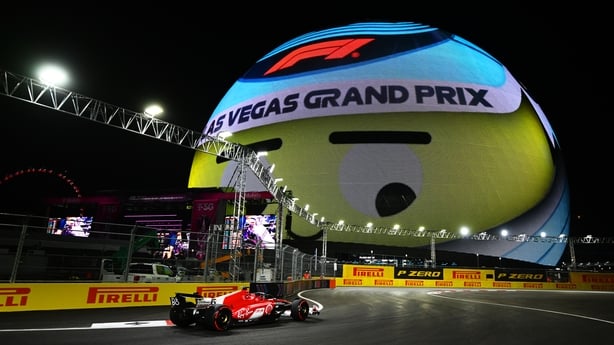
Yes, massively.
As recently as 2018, F1’s revenues were around $1.8 billion; so not far off half what they were last year.
They took a hit in 2020 due to the impact of the pandemic – but bounced back after that and have grown rapidly since then.
Part of the reason for that is that sports rights are getting more expensive – and F1 is benefitting from that.
But another factor is the explosion in the sport’s popularity in North America, a very lucrative market, which is something that the owners of F1 – Liberty Media – targeted when it took over in 2017.
And the thing that’s been seen as the key to its success in achieving that target is the Netflix series, Drive to Survive.
This documentary series has incredible access to the teams and drivers involved. It means viewers get to see the highlights of high speed racing with lots of money on the line, and plenty of big egos at play.
Needless to say, it makes for good TV.
Drive to Survive launched its sixth series last month in advance of the 2024 race season.
Just to illustrate what it’s done to F1 popularity in the US - the first season it covered was the 2018 championship. In that year just one of the 21 races was in the US – in Austin, Texas.
In the championship that’s just gotten underway, there will be three races in the US – a Miami Grand Prix was added in 2022, and a Las Vegas race was added last year.
So how money do the teams make?
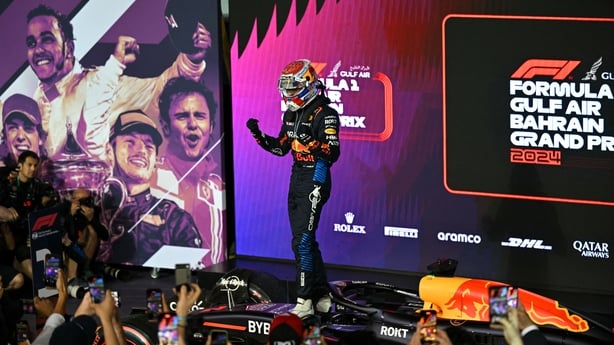
Well that, of course, depends on how well they perform.
Last year the F1 paid out $1.21 billion to teams in prize money.
The first place team gets 14% of that – and the cut reduces as you go down the table, with the 10th place team getting 6%.
So, on that basis, last year’s winners – Red Bull – would have gotten more than $169m.
Haas, which came tenth, would have gotten $72.6m.
Though it’s not quite that straight-forward – because certain teams get an extra payment based on their legacy.
Ferrari, for example, get what’s believed to be around 5% of the prize pot on top of the fee for their actual placement – because they’ve featured in every season since the 1950s.
Other teams with history – like Maclaren and Williams – also get a smaller bonus payment.
But that’s not the only way the teams make their money…
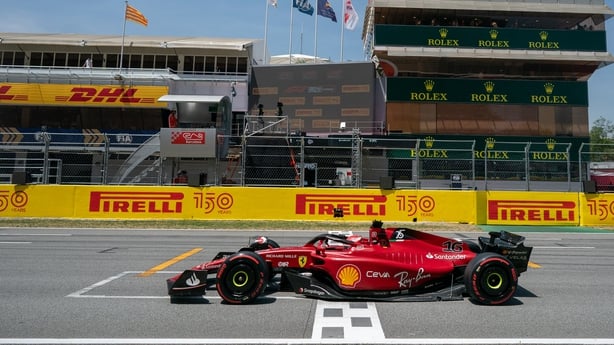
No – you don’t need to pay too much attention to F1 to know that sponsorship is a big part of a team.
The cars themselves and the clothes the drivers and team staff wear are laden down with brands – and these bring in tens of millions of dollars for each team, each year.
The exact value of the sponsorship differs depending on the team – the more successful ones can command more – and on the sponsorship ‘tier’.
Top tier sponsors, or title sponsors, gets their logo in price of place on the car, then the lower down you go the smaller the logo gets, and the more tucked away on the car it is.
One of the biggest deals is Shell – which pays around $40m a year to get its logo prominently displayed on Ferrari’s cars.
But of course the lines are a bit blurred in this sense – because drinks company Red Bull owns the racing team that uses its name, so it doesn’t pay to sponsor the team, but its brand still benefits from its association with the team as if it was a sponsor.
And that applies in a different way with the likes of Mercedes and Ferrari – because their car brands benefit from the association with F1.
Having a fast car in F1 will help improve the image of their consumer cars, even if they have very little in common with their F1 cousins.
Though there are also examples of innovations in F1 eventually making its way to consumer cars – especially at the high end – so they can benefit in that way too.
So to make big money you have to win races, and to do that you need to spend big…
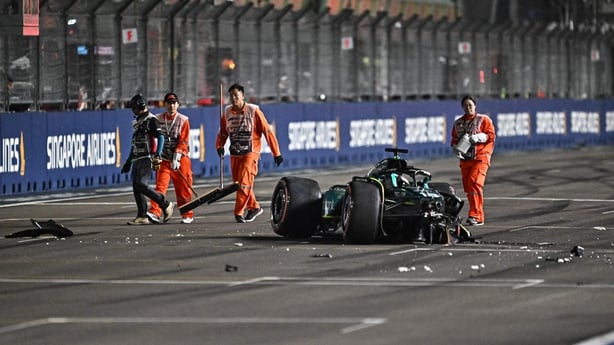
Yes – researching and developing a car that will be fast enough to compete in F1 takes a huge investment.
Back in 2022, Red Bull estimated a cost of around €15m per car.
The body and the engine is of course the big part of that – but every part involved has an eye-watering price tag.
The front and rear wings cost around €200,000, it said. The steering wheel costs around €50,000.
And bear in mind that each team has two cars racing – and each time there’s a malfunction or a crash, those repairs have to be paid for.
There was one case in an episode of Drive to Survive were a driver had a bad – but by no means catastrophic – crash, and the team estimated it would cost $1m to fix.
But even those huge figures don’t really tell the whole picture – because there’s a huge amount invested in research and development before the car is ever made.
And the cars used today are based on decades of research and tweaks and adjustments – so you’re talking about years of multi-million dollar investments to get what we have today.
The other big cost is the driver – how much do they make?
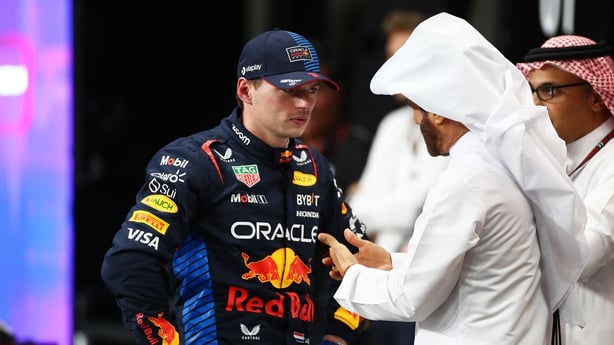
Much like the teams, it depends on how good they are.
And they’d tend to have bonuses built into their contracts, so if they get points in a race – or get on the podium – they’ll get more.
But it’s safe to say that an F1 driver is earning seven figures at a minimum.
At the top of the table would be the likes of Max Verstappen and Lewis Hamilton, who are reportedly earning somewhere in the region of $55m a year as F1 drivers.
Are there other big earners in an F1 team?
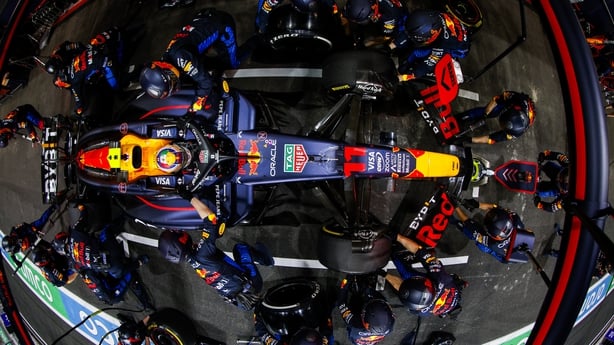
Well they’re not quite on driver salaries, but certain members of the pit crew seem to be very well compensated.
A crew chief can reportedly early somewhere in the region of $1m a year.
A tire changer can earn around $350,000 – a tire carrier earns a little less than that.
That might seem like a lot – but a fast pit stop can be make or break in a race; anything north of three seconds would be considered slow.
And, as your placement in the table can make millions of dollars of difference in terms to a team, spending hundreds of thousands of dollars for the right staff makes sense.
But really the pit crew are the tip of the iceberg in terms of the logistics that are involved in a modern F1 team.
How big of an operation is it?


It’s a huge, and extremely complicated thing.
So an F1 team is actually a decent-sized company in its own right.
Mercedes and Red Bull have upwards of 1,000 employees each, for example.
Smaller teams like Haas have closer to 250.
Part of the reason for that big difference is because the likes of Mercedes makes more of their own car – like the engine – while the likes of Haas buys those parts in.
But for all teams there’s also a massive logistical operation behind making each race happen – well beyond the pit crew being ready with spare tyres.
Because the teams will bring their own garages in, where they’ll work on the car.
They also have a pit gantry – which is basically a wall of monitors where the team can monitor what’s going on on the track and relay messages to drivers.
And to back that up there’s also a huge amount of electrical equipment shipped in so they can track everything that’s going on on the track and keep in radio contact with members of the team.
But, on top of all of that race-day equipment, they effectively bring their headquarters with them too.
They’re called motorhomes – but if you watch Drive to Survive you’ll see they’re effectively small office blocks.
Red Bull’s is three storeys tall and 13,000 square feet in size – it would have office space, gym and physio areas, a kitchen and dining area, a rooftop deck for chilling out on.
And you’d be forgiven for thinking it’s a permanent structure, but it’s not.
It’s trucked days before a race and put together – and then taken a part and trucked back out once the race is over.
And that has to be done rapidly – because some races might only be a week apart, and teams want to have everything set up by the Thursday before the race weekend at the latest.
It takes two to three days to put these structures together, and about a day to take it apart - so those offices would be getting taken apart before the race has even ended, just to ensure it was on the back of a truck in enough time to get it to its next location.
Depending on the gap between the two races – that might see trucks with multiple drivers, who swap every few hours to allow it to drive non-stop.
Or it could mean the truck goes to the airport where the cargo is loaded onto a plane and flown, at an extremely high cost, to the next city.
Teams also have multiple ‘kits’, which all contain the same non-critical equipment like furniture, utensils and so on.
They are ferried out to different continents months before the season starts, and then those kits are shifted around different locations depending on what’s coming next in the calendar.
They do something called ‘leapfrogging’ – so, for example, the next race is happening in Melbourne Australia this weekend, and then the teams move on to Japan, and then China.
Those races will all use the same ‘kit’, but while they’re doing that, teams will have their North American kits being prepared for the Miami Grand Prix in May, and the European kits will be getting ready for the race in Imola in Italy.
In 2021, DHL said it shifted 1,540 tones of F1 equipment over more than 74,500 miles.
The carbon footprint must be huge…

It is.
The most recent figure F1 gave was 256,000 tonnes of Co2 back in 2019.
Which is quite high – though it actually seems a little lower than I would have expected.
For context, that would be equal to the annual emissions of 21,512 Irish people, based on EPA figures from 2022.
F1 said almost half of its emissions came from the air, road and sea logistics involved in getting gear from race to race.
Around 28% is from flying teams’ staff from place to place – which would include the private jets the drivers would often travel on.
The cars themselves only make up around 0.7% of F1s total emissions.


